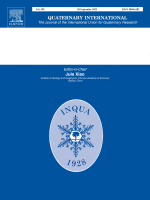Abstract
Understanding the organisation of food production is vital for understanding ancient societies. Multiple factors may influence decision making, including the local environmental capacity of a given area and individual and cultural preferences. This study compares zooarchaeological data from sites across the length and breadth of the Holocene Near East with modelled patterns of land use. The goal is to determine how far variation in the capacities of local landscapes impacted the choices made in animal production. Our approach allows us to investigate trends through time as well as between different regions of the Near East. The spatial and temporal scales employed also mean we can investigate the relationship between food production and climate trends. We find substantial patterning in the choices made in animal production, reflecting complex and regionally diverse production approaches. We demonstrate a prioritisation of individual and societal preferences to produce specific animals which is rarely impacted by either short or long term changes in aridity. We also find that the emergence of urban sites has a major impact on provisioning structures, and argue that the resulting organisational forms may have resulted in urban sustainability at the expense or rural sites.
Publication Type
- Article



